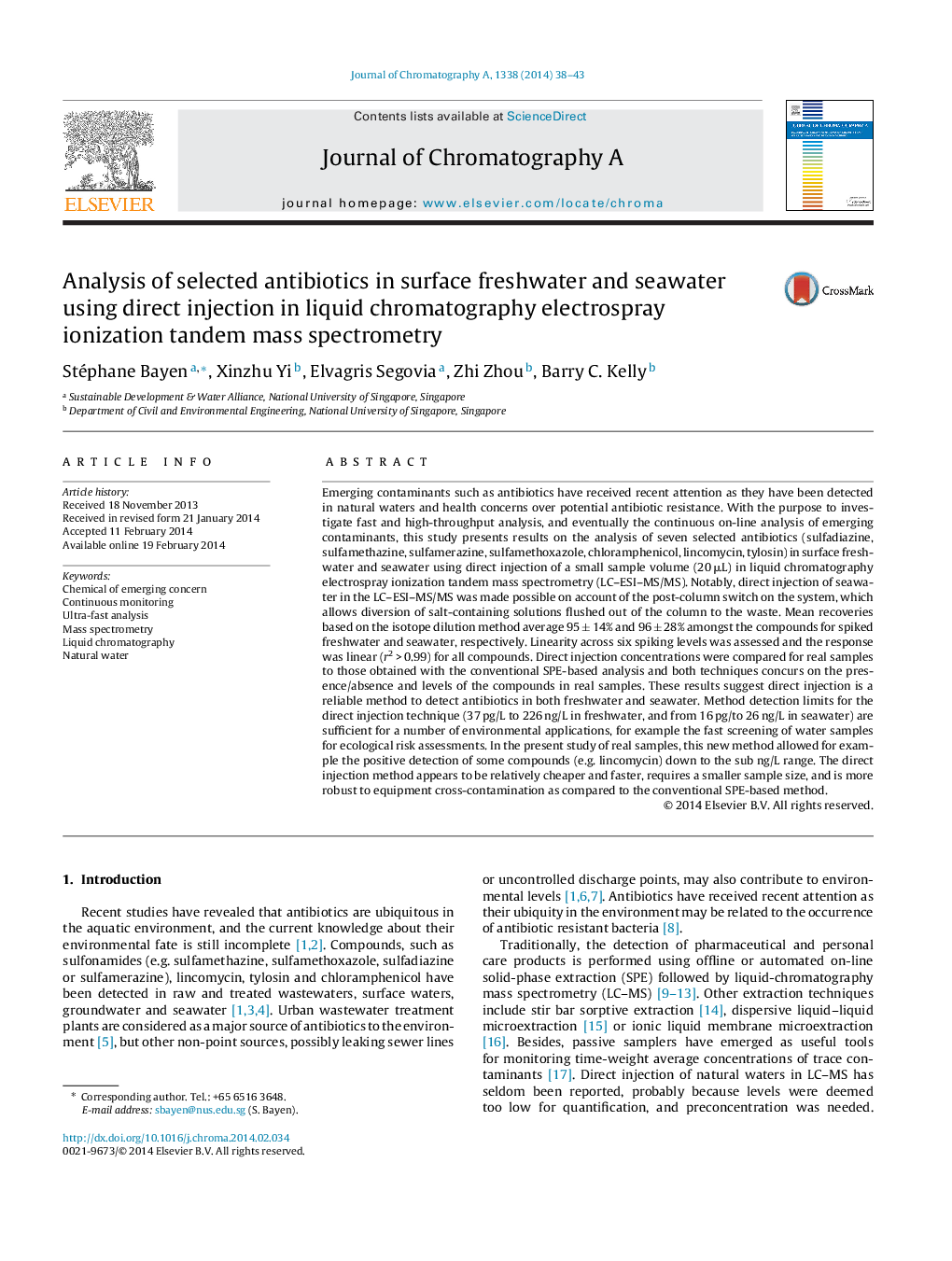| Article ID | Journal | Published Year | Pages | File Type |
|---|---|---|---|---|
| 7613367 | Journal of Chromatography A | 2014 | 6 Pages |
Abstract
Emerging contaminants such as antibiotics have received recent attention as they have been detected in natural waters and health concerns over potential antibiotic resistance. With the purpose to investigate fast and high-throughput analysis, and eventually the continuous on-line analysis of emerging contaminants, this study presents results on the analysis of seven selected antibiotics (sulfadiazine, sulfamethazine, sulfamerazine, sulfamethoxazole, chloramphenicol, lincomycin, tylosin) in surface freshwater and seawater using direct injection of a small sample volume (20 μL) in liquid chromatography electrospray ionization tandem mass spectrometry (LC-ESI-MS/MS). Notably, direct injection of seawater in the LC-ESI-MS/MS was made possible on account of the post-column switch on the system, which allows diversion of salt-containing solutions flushed out of the column to the waste. Mean recoveries based on the isotope dilution method average 95 ± 14% and 96 ± 28% amongst the compounds for spiked freshwater and seawater, respectively. Linearity across six spiking levels was assessed and the response was linear (r2 > 0.99) for all compounds. Direct injection concentrations were compared for real samples to those obtained with the conventional SPE-based analysis and both techniques concurs on the presence/absence and levels of the compounds in real samples. These results suggest direct injection is a reliable method to detect antibiotics in both freshwater and seawater. Method detection limits for the direct injection technique (37 pg/L to 226 ng/L in freshwater, and from 16 pg/to 26 ng/L in seawater) are sufficient for a number of environmental applications, for example the fast screening of water samples for ecological risk assessments. In the present study of real samples, this new method allowed for example the positive detection of some compounds (e.g. lincomycin) down to the sub ng/L range. The direct injection method appears to be relatively cheaper and faster, requires a smaller sample size, and is more robust to equipment cross-contamination as compared to the conventional SPE-based method.
Related Topics
Physical Sciences and Engineering
Chemistry
Analytical Chemistry
Authors
Stéphane Bayen, Xinzhu Yi, Elvagris Segovia, Zhi Zhou, Barry C. Kelly,
